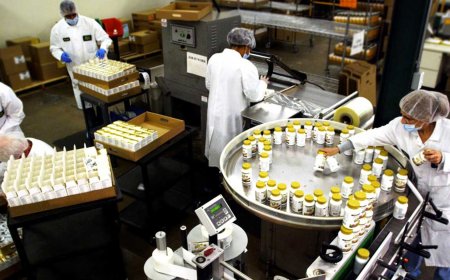Advanced Methodologies in Drug Discovery: A Deep Dive into Molecular Docking
In the landscape of modern computer-aided drug design (CADD),Molecular Dockingstands as a pivotal in silico method. While high-throughput screening (HTS) remains a workhorse for lead discovery, its cost and time intensity have cemented the role of computational techniques to rationalize and accelerate the R&D pipeline. For the medicinal chemist and structural biologist, molecular docking is not merely a virtual screening tool, but a sophisticated methodology for generating and refining structure-based hypotheses.
This article provides a deeper perspective on the core components, challenges, and advanced applications of this indispensable technique.
The Docking Problem: Sampling and Scoring
At its heart, the goal ofMolecular Dockingis to predict the preferred orientation (the "pose") and the binding affinity of a ligand within the active site of a receptor. The success of this prediction hinges on two critical components: the search algorithm and the scoring function.
- The Search Algorithm (Sampling):This component is responsible for exploring the vast conformational space of the ligand and, in some cases, the receptor. A ligand is not a rigid entity; its rotatable bonds allow for a multitude of conformations. The algorithm must efficiently sample these degrees of freedom to find poses that are sterically and chemically favorable. Common algorithms include:
- Stochastic Methods:Such as Monte Carlo and Genetic Algorithms (like the well-known Lamarckian Genetic Algorithm in AutoDock), which use random changes and evolutionary principles to search for low-energy states.
- Systematic Searches:Which exhaustively explore every degree of freedom, though often computationally prohibitive for flexible ligands.
A significant challenge here is accounting forreceptor flexibility. While many protocols treat the protein as a rigid entity to maintain computational speed, this ignores the "induced-fit" phenomenon. Advanced approaches now incorporate side-chain flexibility or utilize "ensemble docking," where simulations are run against multiple conformations of the receptor, providing a more dynamic and realistic model of the binding event.
- The Scoring Function (Scoring):For each sampled pose, a scoring function estimates the binding free energy (?G). This score is what ultimately ranks one ligand against another. Scoring functions are the most challenging aspect of docking to perfect and generally fall into three classes:
- Force-Field-Based:These use classical mechanics parameters (e.g., from CHARMM, AMBER) to calculate van der Waals and electrostatic interactions.
- Empirical:These are fast, regression-based functions that use weighted terms for interactions like hydrogen bonds, ionic interactions, and hydrophobic effects, fitted to experimental data.
- Knowledge-Based:These derive statistical potentials (potentials of mean force) from solved crystal structures, assuming that preferred ligand-receptor contacts are more probable in known complexes.
Critically, experts recognize that while scoring functions are generally effective at predicting bindingposes, their ability to accurately rank-order diverse chemical scaffolds by true bindingaffinityremains a significant challenge. Thus, results often require careful post-processing, rescoring, or validation with more rigorous methods like Molecular Dynamics (MD) simulations.
Beyond Virtual Screening: Advanced Applications
A professionalMolecular Docking Serviceleverages this technology for far more than just identifying initial hits. Its applications span the drug discovery continuum:
- Lead Optimization:Docking provides crucial insights into the Structure-Activity Relationship (SAR). By visualizing how an optimized analog gains or loses key interactions (e.g., a new hydrogen bond, resolving a steric clash), chemists can make more rational design decisions.
- Fragment-Based Drug Discovery (FBDD):Docking is essential for predicting the binding modes of low-molecular-weight fragments, providing the structural starting point for fragment linking or growing strategies.
- Mechanism of Action & Resistance:The technique can be used to hypothesize why mutations lead to drug resistance by showing how a change in the active site disrupts binding.
- ADMET Profiling:Docking can help predict potential off-target effects or interactions with metabolizing enzymes, such as Cytochrome P450s, by screening a drug candidate against panels of anti-targets.
At Creative Proteomics, ourMolecular Docking Serviceis designed for the expert. We go beyond default protocols, offering customized workflows to tackle specific challenges like metalloprotein targets, covalent docking, or systems with significant loop flexibility. By integrating robust docking protocols with downstream validation, such as MM/PBSA or MM/GBSA energy calculations from MD simulations, we provide a higher-confidence data package to drive your projects forward. We understand the nuances of the science and partner with you to transform computational hypotheses into tangible experimental progress.





































